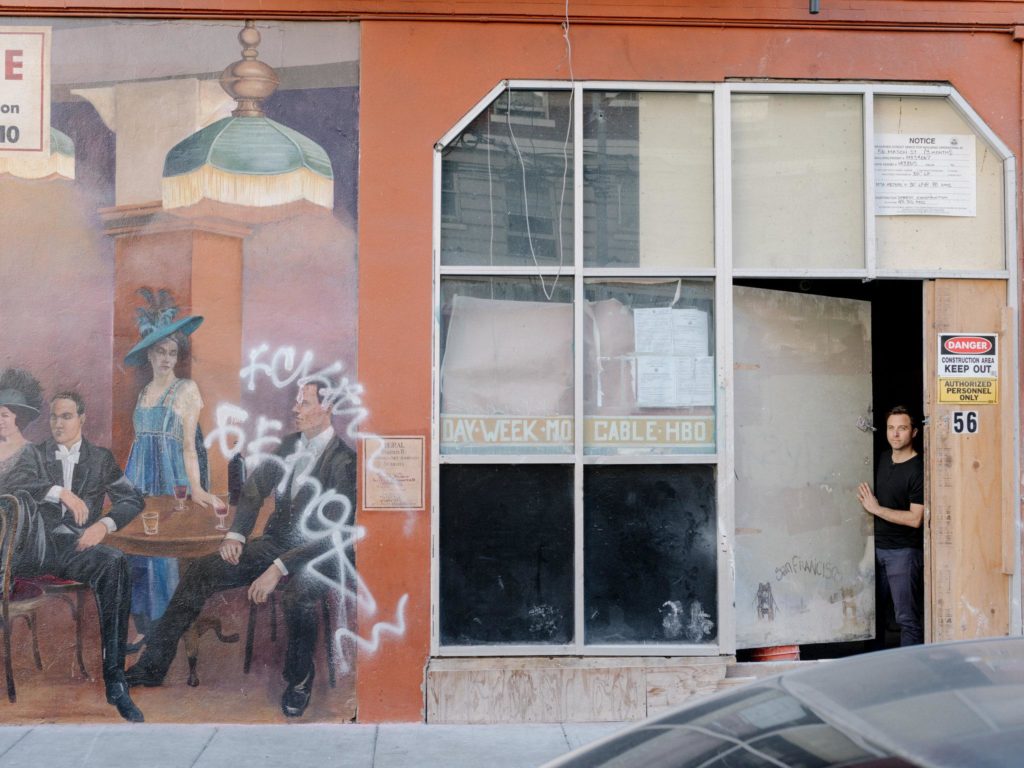SROs, or single room occupancy hotels, have long formed the backbone of San Francisco housing. SROs traditionally serve low-income individuals and are often owned privately, but operated by nonprofits or leased by the city. According to the Department of Building Inspection, there are 404 privately owned SROs in San Francisco with around 13,190 residential rooms available for rental.
As the housing crisis in San Francisco shows no signs of abating, the concept of SROs is expanding. New startups are emerging to bring the SRO model to young professionals, offering dorm-style living to the “middle-class backbone of San Francisco.” One of these startups, Starcity, was recently featured in the New York Times. Starcity’s customers—who make between $40,000 and $90,000—pay upwards of $2,400 for what is essentially a luxury SRO: a private room with shared bathrooms and common areas.
Starcity already has three properties in San Francisco with 36 units and nine more in development, along with $18.9 million in venture capital funding. The New York Times described the CEO and co-founder, John Dishotsky, showing a reporter one of these prospective properties. Wearing “muddy leather boots, black jeans and a hard hat,” he examines the property at 56 Mason Street. The reporter writes, “it will soon be 71 Starcity units.”
56 Mason Street was formerly known as Bristol Hotel, an (admittedly non-luxury) SRO with a questionable past.
The Bristol Hotel and vacant SROs
While the Bristol Hotel is currently vacant, it was occupied as recently as 2012. The owner, Balwantsinh Tahkor, had given notice to the tenants to temporarily vacate their units at the end of 2012 for repair. According to court papers, though, his son prepared a marketing plan in 2013 that was submitted to potential money-lenders indicating that the Bristol “will be a mixed use with student housing and tourist guests staying.” In August 2013, they prepared a conversion plan that misrepresented that “agreements were made with existing tenants…for them to move out permanently and convert the building into a fully tourist licensed hotel.”
The tenants filed a number of complaints as the years went on, and eventually the Superior Court of California ordered in 2016 that Thakor had to restore the tenants “to their units at the Bristol Hotel no later than August 1, 2017,” which never happened. According to Dishotsky of Starcity, there is an ongoing lawsuit with the Bristol Hotel, although he didn’t specify if it was related to this.
According to two articles by Joe Eskenazi for the Public Press, SRO owners face lucrative incentives for leaving rooms vacant. In the case of the Bristol Hotel, as per the court papers, Thakor had led bankers to believe that the hotel “was vacant and that no rent-controlled tenants would be returning. Tourist units would have had a much higher stream of income than was projected by the banks.”

image description: Mr. Dishotsky in the Tenderloin neighborhood, where Starcity is renovating two large buildings.
According to the Residential Hotel Unit Conversion and Demolition Ordinance of 1979, SRO owners must declare which rooms are residential and which are for tourists, permanently. Residential rooms underwritten by city departments like the Department of Homelessness and Supportive Housing offer hotel owners rates of $650-800 per month for a room. Tourists often pay upwards of $600 a night for a room.
Per the conversion ordinance, owners who covert rooms must offer former residents replacement rooms at the same monthly rate they had been paying. As a result, owners are incentivized to leave rooms empty or force their residents out of the building to do unending repairs, as was the case with the Bristol Hotel. According to the most recent estimate by the Department of Building Inspection, 14 percent of the 13,190 residential rooms available for rental are empty.
In a rebuttal to Eskenazi’s reporting, Randy Shaw of the Tenderloin Housing Clinic countered that “virtually every owner of a currently vacant SRO I know wants to lease it out for city homeless programs.” In fact, he cited that he worked with Thakor to lease the Bristol Hotel to San Francisco for step-up housing for formerly homeless single adults once it had finished its renovations. Since the Bristol has all private baths and only 57 units, the city decided that nonprofit master leasing would be too expensive.
Regardless, the Bristol Hotel clearly had more lucrative ventures in mind when they ejected their tenants in 2012 and began looking for other opportunities. After the city rejected their plan to work with the Tenderloin Housing Clinic, they began conversations with Starcity to convert the former SRO into the startup’s more euphemistic (and expensive) “dorm living for professionals.”
Starcity
I interviewed John Dishotsky for this article, and he said that the New York Times reporter had misrepresented Starcity’s progress at the Bristol Hotel property. Starcity is just in talks with Thakor, and upon finding out that Thakor is embroiled in a lawsuit, has slowed down any discussions on taking over the property. They even asked the Times reporter to correct the article.
Dishotsky made sure to reiterate to me that Starcity typically avoids taking over SROs at all cost, precisely because it can create an economic incentive for previous owners to be bad actors. This is especially true for vacant SROs. He said that the vast majority of Starcity properties are vacant commercial buildings that have never been used for housing.
As he pointed out, though, one of their three operational Starcity properties is a former SRO. He explained that they only took it over because it was in complete disrepair. There were only four individuals living in the building, and Starcity is allowing them to stay in their (refurbished) rooms at the same rate they were paying before: $400 a month, or one-fourth the base rent of the property’s new tenants.
I pushed him on the Bristol Hotel property. Clearly if he took the New York Times reporter to the property, talks were not as premature as he let on. He admitted that the Bristol Hotel is not entirely off the table. While Starcity doesn’t want to support the business of having people being pushed out of SROs, they would rather take over vacated SROs and restore the rooms to previous tenants than have their rights ignored by other property owners who would just convert the rooms to market-rate housing. He also stated that Starcity would only take over these buildings with the “overwhelming support of the neighborhood.”
Of course, by even buying the building, Starcity would be incentivizing other SRO owners to leave rooms vacant or derelict so that they may eventually be bought as well. Even assuming Stacity would be as altruistic as they claim with the Bristol Hotel’s previous tenants, they would also be setting an example for future, less charitable copycats to gobble up vacated SROs. As Dishotsky told me, Starcity receives dozens and dozens of offers to buy SROs every month.
Randy Shaw argues that this is a necessary evil. The city clearly showed no interest in master-leasing the Bristol Hotel, and whether the owner was a bad actor or not, the fact remains that the rooms lie vacant. All we’re left with is a question: Is filling a room a zero-sum game?


